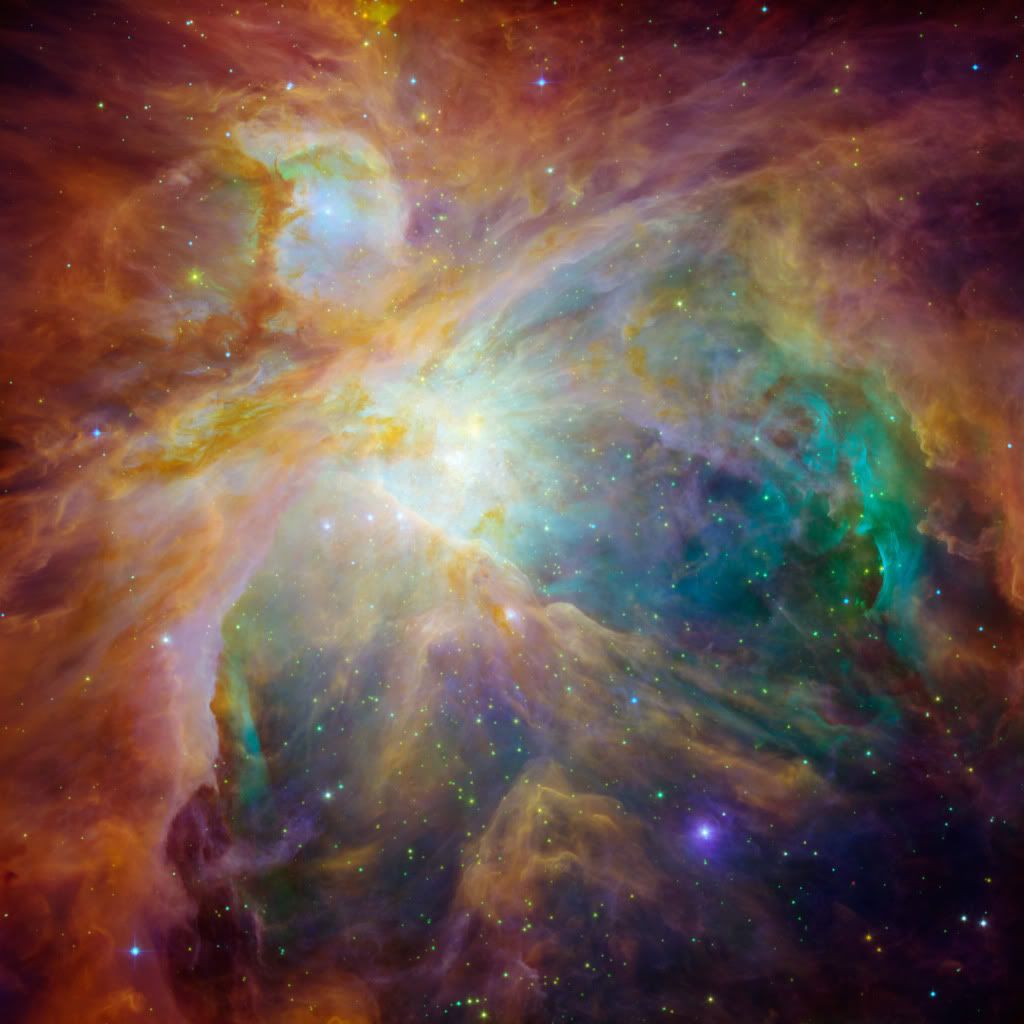Physicists don't like coincidences. So says a recent article in "Discover Magazine On-line.*" Apparently one of the coincidences making them very uncomfortable is recent evidence that indicates that life is somehow central to the way the universe functions.
For more than a century, scientists have rested comfortably in the idea that life in this universe is the result of one big old accident. Recent discoveries, however, are forcing scientists - physicists in particular - out of their comfort zone. It appears that life, after all, may not be just some cosmic accident, an accidental byproduct of a random mixture of chemicals, heat and the odd lightning bolt – here today and gone tomorrow as the universe goes.
“In some strange sense, it appears that we are not adapted to the universe;” says the Discover article. “The universe is adapted to us.”
So, as Christians, who have long been made fun of for believing that same idea - do we get to start jumping up and down and singing “Nanny, nanny, boo, boo! We told you so!” I mean after all, it seems that the biggest problem in physics is now that the universe looks like it may not be accidental at all, but, in fact, may be designed for us.
Should we gloat? Of course not. It would be ungracious. Satisfying, but ungracious.
It's a really tough problem for modern science. If you accept what scientists have been observing about the universe lately, there are only two possible explanations:
There is a benevolent creator who designed the universe specifically to support life.
There are multiple universes – so many that one of them accidentally has all the characteristics necessary to supports life (sort of like the old postulate that if millions of monkeys randomly banged away at millions of typewriters long enough, one day, quite by accident, one of them would type up War & Peace).
Here are some of the facts that lead to what is for physicists such an awkwardly narrow pair of choices:
- If you change even small things about the universe and life cannot exist. If, for instance, at the atomic level, the mass of electrons is doubled or the strength of the interaction between protons and electrons is altered by even a small amount, life would literally disappear. The Discover article points out that there are three space dimensions and one time dimension? If we had four space dimensions and one time dimension, then planetary systems would be unstable and our version of life would be impossible. If we had two space dimensions and one time dimension, we'd be flatter than a sheet of paper and again, life would not exist.
- Brandon Carter, a physicist at Cambridge proposed the idea that the universe was made just for us—the so-called anthropic principle—in 1973. The anthropic principle asserts that the laws of physics themselves are biased toward life. Renowned physicist, Freeman Dyson, who is by no means a creationist, goes so far as to say that if we accept the strong anthropic principle then it looks like “the universe knew we were coming.”
- Matter clumping: If matter was more evenly distributed in the universe, it wouldn’t have bunched up to create planets, stars and galaxies. If it had been clumpier, everything would have piled up into massive black holes where life is impossible. Like Goldilocks with the porridge bowls, apparently this universe was selected to support life because matter is just lumpy enough and not too lumpy, just hot enough and not too hot, which brings us to our next “problem” for physicists.
- Uniform temperatures: Oddly enough, the temperature of space is 2.7 degrees Celsius above absolute zero everywhere astronomers have looked. According to the original Big Bang theory, temperatures should be more random. If the universe has been cooling since the Big Bang, different widely separated regions of the universe would have had to exchange heat like ice cubes in a glass of tea. But since according to Einstein, nothing—including heat—can travel faster than the speed of light, then according to the conventional theory there hasn’t been enough time for that to happen. Exchanging heat, even at the speed of light, there hasn’t been enough time for the universe to achieve even temperatures everywhere and yet everywhere the temperature is the same.
- In 1998 researchers found that the expansion of the universe is accelerating. Theoretically, they expected the expansion of the universe to be slowing down and eventually stop altogether and then for the universe to actually begin collapsing in upon itself. Instead there is apparently some unknown “force that is built into the fabric of space and time that is pushing everything apart. For want of a better name, physicists are calling it dark energy. I call it "The Goldilocks Constant". What’s even more incredible for those who believe in random chance and chaos, the amount of energy is exactly enough to accelerate expansion, but not so much that it would cause the universe to rip itself apart. The amount of this so-called dark energy is coincidentally exactly right to allow for the existence of stars and planets and life. Nobel prize winner Dr. Steven Weinberg at the University of Texas*, says, “This is the one fine-tuning that seems to be extreme, far beyond what you could imagine just having to accept as a mere accident.”
So far the only acceptable conclusion physicists have formulated is that there are multiple universes and that this one accidentally won the cosmic crap shoot and precisely works the way it needs to in order to support life. The multiverse theory is impossibly complex. For many physicists, the multiverse remains a desperate measure, ruled out by the impossibility of confirmation. Scientists have held out hope in recent advances in string theory for a solution to the problem, but a 2000 study at the University of California at Berkeley* calculated that the basic equations of string theory have an astronomical number of different possible solutions; so many in fact that the theory could never be proved right or wrong.
The unacceptable conclusion - the idea that there is a Creator who designed the universe to foster life and who is pushing the universe’s boundaries ever outward - is one science is not prepared to accept. So much for scientific objectivity. There is a scientific principle known as Occam’s Razor, formulated by a 14th century English logician and friar. Paraphrased it states, “"All other things being equal, the simplest solution is the best."
So given all the evidence, of the two solutions, an astronomical number of universes or a universe designed to support life by a creator, which seems simplest to you?
Easy answer if you happen to know the Creator personally.
Just one man’s observation.
Tom King
Flint, TX











No comments:
Post a Comment